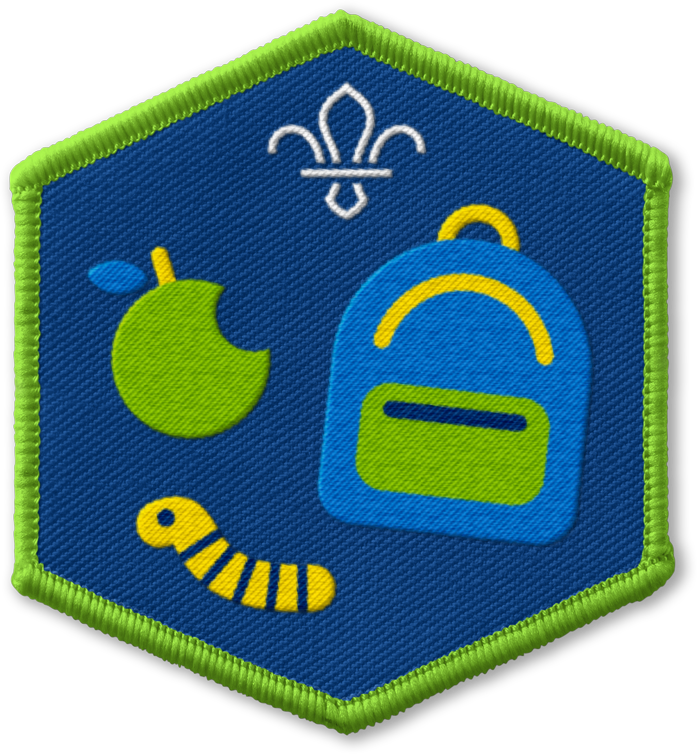Bouldering
What to expect
Bouldering’s all about climbing small rock formations without using ropes. The short routes (or ‘problems’) aren’t high – climbers move horizontally from one end to another, rather than trying to reach the sky.
You don’t need to know loads of knots to enjoy bouldering, and you don’t need much equipment either; as long as you have climbing shoes, chalk, and a crash mat, you’re good to go.
In Scouts, bouldering walls should be man-made, so they’re typically indoors. However, bouldering can – in theory – take place on small rock formations outside too.
What you’ll learn
Bouldering’s a great activity to try before you give roped climbing a go, but it’s also a fun sport in its own right. It’ll help people build stamina and strength (especially in their fingers) as they work together, problem solve, and get back up to try again no matter how many times they fall.
Fun facts
Bouldering started as a form of training for roped climbers, as it gives them the chance to practise moves close to the ground. However, it’s now an Olympic sport. Sport climbing made its Olympic debut in Tokyo in 2021, athletes competed in all three disciplines: bouldering, lead climbing, and speed climbing.
Learn the lingo
Bouldering has its own jargon – you might find learning some helpful to get you up to speed.
- Problem: a sequence of holds with start and end points.
- Crux: the hardest sequence of moves in a problem.
- Sandbag: a route or problem that’s tougher than the advertised grade of information.
- Send: to climb a problem without falling.
- Flash: to complete a problem on the first attempt (nice one!).
- Dyno: a move where the climber jumps (or moves dynamically) from one hold to another.
Handy hints
Shauna Coxsey, champion climber and the first Team GB sport climber, has top tips – including:
- Use your legs. Your legs are much stronger than your arms. Use your feet, and stand up using your legs, instead of just pulling with your arms.
- Don’t be afraid to fail. Falling and failing are as much a part of climbing as getting to the top. If you’re not falling, you’re not trying hard enough.
- Try everything. Don’t be afraid of the steep stuff – get involved and give things a go, even if you don’t think you’ll be good at it.
Safety
You must always:
- Complete a risk assessment
- Have the right ratios of number of adults to provide suitable supervision
- Set up an InTouch process
- Know what to do in an emergency
- Share information with parents and carers with an activity information form
- Get approval from your Lead Volunteer.
Be safe outdoors:
- Check the weather forecast
Climbing and abseiling:
- Everyone must wear a helmet whilst climbing or abseiling on natural rock or if a novice, further exemptions apply.
- Make sure that all equipment is fit for purpose and in good condition.
- When walking directly to or from a multi pitch climb the party size may be less than 4, otherwise follow 9.12.6 party sizes.
Other activities:
- Where an activity is not covered by any other rules members must follow rule 9.1 and assess the risk, ensure that members can be kept safe and that all equipment is suitable for its use.
Joint activities with other organisations:
- This activity can be run jointly with Girlguiding.
- This activity can be run with other organisations.
This activity can be led by you or someone else in Scouts
You can go to a centre or use an activity leader who is not part of Scouting:
You must find a suitable provider who meets the following requirements:- The centre/instructor should hold one of these: (If the provider is AALA exempt)
- Mountain Training - Single Pitch Award (SPA) - for climbing and abseiling on natural rock
- Mountain Training - Climbing Wall Award (CWA) - for indoor climbing
- Adventure Mark - centre
The provider must have public liability insurance.
Guidance
Reflection
Bouldering’s a fun way to be active. Which parts of their body did people use when bouldering? How did each part of their body move? Was bouldering about being the fastest, or was slow and steady a good strategy? Did people learn anything that might be useful for another way of being active?
It’s pretty rare to send a problem when you first start out, so this activity needed everyone to persevere. How did people feel when they fell before they reached the end of the problem? Was it easy to get back up and try again? Sometimes, people need to work together to solve trickier problems – having someone else’s perspective and suggestions can be really helpful. What other sort of problems might be helped by asking a friend for their support?
- Bouldering can often be adapted so more people can give it a go. Many outdoor centres have facilities that cater for people with additional needs and experienced instructors to help everyone achieve their goals. Get in touch with your local provider to chat through the needs of people in your group – make sure you give them plenty of notice.
- For general advice on finding inclusive climbing spots, check out this information from the British Mountaineering Council.
All Scout activities should be inclusive and accessible.




